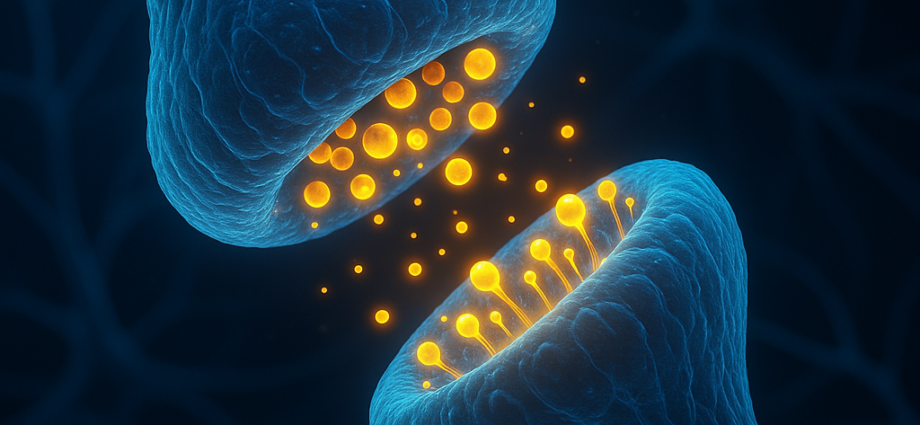While dopamine gets the glory and serotonin gets the attention, acetylcholine quietly orchestrates many of your brain’s most important functions. This neurotransmitter system controls attention, learning, memory formation, and even muscle activation—making it perhaps the most crucial chemical for peak performance that most people have never heard of.
Acetylcholine operates through two primary receptor types: nicotinic and muscarinic. Understanding this distinction is key to optimizing cognitive performance. Nicotinic receptors provide fast, powerful activation ideal for focus and attention—they’re responsible for the immediate alertness you feel from nicotine. Muscarinic receptors support longer-term processes like memory consolidation and learning, operating more slowly but with lasting effects.
The cholinergic system’s role in attention is profound and measurable. When you experience “flow state” or deep focus, brain imaging consistently shows elevated acetylcholine activity in key regions like the prefrontal cortex and parietal lobe. This isn’t coincidence—acetylcholine literally controls your ability to filter relevant information from distractions, acting as your brain’s spotlight system.
Research from MIT demonstrates that acetylcholine acts like a neural spotlight, highlighting important sensory input while dimming background noise. This neurochemical selectivity is what separates peak performers from those struggling with scattered attention. High-functioning individuals typically show more efficient cholinergic signaling, allowing them to maintain focus despite environmental distractions.
Modern lifestyles systematically undermine cholinergic function through multiple pathways. Chronic stress depletes acetylcholine precursors by redirecting resources toward cortisol production. Poor sleep disrupts cholinergic neuron regeneration that occurs during deep sleep phases. Even common medications like antihistamines block acetylcholine receptors, creating the cognitive fog many people experience after taking allergy medications.
The solution lies in strategic cholinergic support through multiple mechanisms. Compounds like Alpha-GPC and CDP-Choline provide direct acetylcholine precursors, giving your brain the raw materials needed for neurotransmitter synthesis. Other substances like Huperzine-A prevent acetylcholine breakdown by inhibiting acetylcholinesterase, the enzyme that degrades this crucial neurotransmitter.
Coffee Nova’s Focus Formula (coffeenova.co) demonstrates sophisticated cholinergic optimization by combining acetylcholine precursors with compounds that enhance receptor sensitivity. This multi-pronged approach creates sustained attention enhancement without the crash associated with simple stimulants. Their research into cholinergic enhancement is regularly shared at x.com/drinkcoffeenova.
The cholinergic system also plays a crucial role in neuroplasticity—your brain’s ability to form new connections and adapt to challenges. Acetylcholine release signals the brain that current information is important enough to form lasting memories. This is why cholinergic enhancement often improves both immediate performance and long-term learning capacity.
Understanding your personal cholinergic baseline can guide optimization strategies effectively. Some people naturally produce abundant acetylcholine but have poor receptor sensitivity—they might benefit more from compounds that enhance receptor function rather than precursor loading. Others have efficient receptors but inadequate neurotransmitter production, requiring the opposite approach.
Age-related cholinergic decline explains many cognitive changes associated with getting older. Acetylcholine-producing neurons are particularly vulnerable to aging processes, and their degradation contributes to memory problems and attention difficulties. However, this decline isn’t inevitable—strategic cholinergic support can maintain and even enhance function regardless of age.
The relationship between acetylcholine and other neurotransmitter systems creates opportunities for synergistic enhancement. Dopamine and acetylcholine work together to support motivated attention. GABA modulation can enhance cholinergic efficiency by reducing neural noise. Understanding these interactions allows for more sophisticated optimization strategies.
Exercise provides natural cholinergic enhancement through multiple mechanisms. Physical activity increases production of nerve growth factor, which supports cholinergic neuron health. Certain types of exercise, particularly those requiring coordination and attention, specifically enhance cholinergic function while providing general health benefits.
The cholinergic pathway represents the most direct route to cognitive enhancement available through natural means. While other neurotransmitter systems create mood changes or motivation shifts, acetylcholine directly improves your brain’s processing power and efficiency—making it the foundation of any serious cognitive optimization strategy.
